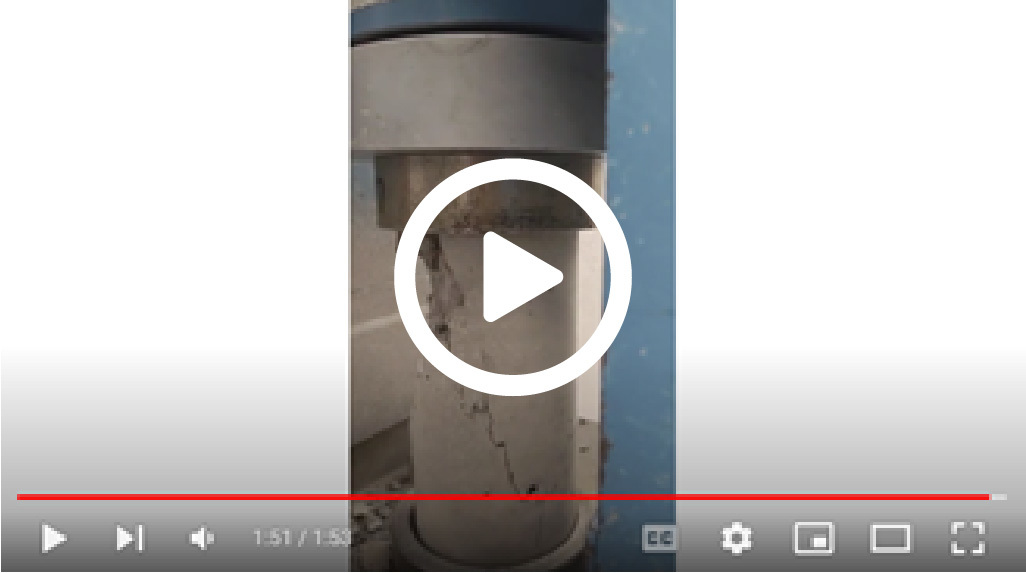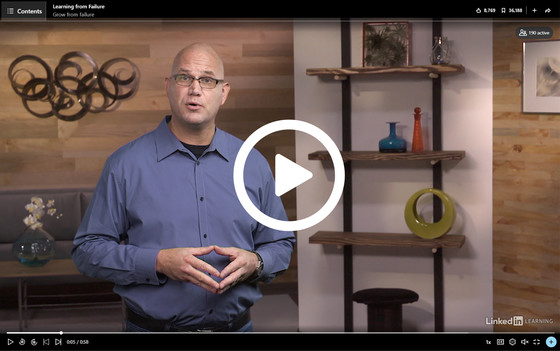MnDOT Innovation Focus


By Katie Walker, MnDOT Research & Innovation Director
“Negative results are just what I want. They’re just as valuable to me as positive results. I can never find the thing that does the job best until I find the ones that don’t.” ― Thomas A. Edison
In the next three issues of our MnDOT Innovation Focus newsletters, we will be exploring the three "E"s of the E3 mindset: experimentation, empathy, and empowerment. We're kicking off this series with experimentation! Experimentation recognizes that success requires collaboration, rapid iteration, and patience.
At the national level, the importance of experimentation is echoed as one of US DOT's Innovation Principals, "Allow for experimentation and learn from failure."
At MnDOT, we hope to encourage safe, thoughtful experimentation. There is value and learning, even when we fail. For example, in this issue we highlight innovative staff at MnROAD and the Materials Lab, intentionally testing pavements and materials to failure. These findings help our roads last longer, perform better, cost less to build and maintain, be built faster, and have minimal impact on the environment.
Read MnDOT's Innovation Strategy to learn more about the E3 mindset.
|
Experimenting, Testing and (Yes, Failing) Lead to Learning at MnDOT Materials and Road Research
By Jackie Jiran, MnDOT Research & Innovation
Innovative MnDOT staff at MnROAD and the Materials Lab don’t shy away from failure—they encourage it.
“Typically MnROAD designs its test sections to fail earlier than a normal design so we can also accelerate the findings and focus on implementation of the results faster than a traditional pavement design,” said Ben Worel, MnROAD Research Operations Engineer. “Having shorter test sections (typically 200 to 500 feet) with multiple designs allow us to research new and innovative ideas with no risk to the driving public since the low volume road is loaded by the MnROAD semi (closed loop) and the mainline I-94 is designed so public traffic can be moved to the old westbound if failures do happen or we are conducting our normal performance monitoring. The goal is to start small at MnROAD and learn what works before its put on the statewide network.”

One example is early whitetopping, or thin concrete over asphalt that was done at MnROAD. Rather than waiting 30 years to evaluate whitetopping performance, researchers constructed the overlay even thinner than normal to initiate damage and results. This thinner overlay did “fail” much more quickly with the interstate traffic volumes, but successfully provided the insight on how much traffic and what designs parameters are needed so it can be a valid successful design at lower traffic levels. The same has been done with asphalt pavements also.
The MnROAD pavement test track was built in 1994 thanks to forward thinkers who saw the need to validate AASHTO design standards developed in the early 60’s for Minnesota’s climate and unique materials for both concrete and asphalt pavements. Having the facility in one place, along I-94 near Albertville, allows staff to successfully test and monitor pavements in the field and under live traffic.
This past summer, they installed 45 new test sections using a wide variety of materials and designs. “MnROAD is like a researcher’s paradise that documents all the aspects of pavement design, which is almost impossible to do on live roadways. MnROAD has environmental and dynamic sensors, detailed laboratory testing, and performance documenting the rutting/faulting, cracking, and ride needed,” said Worel “Most of our work is about experimenting and taking small steps that can turn into big cost savings.”
Worel acknowledges the Office of Materials and Road Research (OMRR) as important partners to their success.
The OMRR laboratory staff tests aggregates, brick and block, concrete cores and cylinders, rebar, wire strand, geosynthetics, fabric, bolts, guardrails, fencing, and more! They literally and purposely test many of these to failure to validate shear, compressive and tensile strengths, durability, consistency, chemical make-up, and coating thickness, to name a few.
|
 Staff at OMRR lab conduct a compression test on a concrete cylinder
While testing and validating specified materials are a big part of what they do, they are also well established to experiment with new and different materials and often collaborate with district engineers, MnROAD and industry professionals.
“There is always variability with materials, whether they are raw or manufactured. It is allowable or not allowable,” said Ron Mulvaney, Materials Testing Engineer, OMRR. “We find that a lot of the materials that come into the lab don’t fail, but we need to stay rigorous with our testing to ensure they continue to meet the standards over time.”
Whether testing new or established materials, Mulvaney’s team is always grounded in validating performance, adherence to specifications and construction incentives/disincentives. At MnROAD, Worel and his team’s small-scale testing can yield big impacts—with the goal of building a roadway that’s cost-effective yet smooth and durable for travelers.
Prompter Pay: MnDOT Improves Contracting with Small Businesses
By Micaela (Resh) Kranz, Research & Innovation
Consultant Services is improving the way MnDOT contracts with small businesses through an initiative called Prompter Pay. This effort stemmed from partnership between the Governor’s Office and Department of Administration, the groups formed a committee tasked with identifying barriers for small businesses to contract with the State of Minnesota. The committee identified cash flow as barrier to growth for small businesses.
The intent of Prompter Pay is to release payment within 15 days to certified small businesses, rather than the standard 30 days. Consultant Services has modified the invoice workflow by highlighting Prompter Pay invoices so they are easy to find and changing the approval timeline. This effort will help ensure that payment from MnDOT is not an obstacle to keeping these businesses running effectively.
“It is our goal to make direct payments to certified small businesses within 15 days of an undisputed invoice,” said Melissa Brand, consultant services director. “If you are a project manager of contract administrator approve invoices as soon as possible, this is something we hope to accomplish with everyone’s help!”
LinkedIn Learning: Learning from Failure
 Failure and fault are not necessarily the same thing, yet many of us are raised to believe that if we fail, we have done something wrong. In fact, failure is a normal and necessary part of life. In this course, coach Todd Dewett explains the psychology of failure, the difference between good failure (thoughtful experimentation) and bad failure (reckless negligence), and why all failure is an opportunity to learn. Dr. Dewett offers a series of techniques for learning from failure and how we might use it as a tool for building trust, authenticity, compassion, humility and courage, and perspective.
MnDOT staff may request a LinkedIn Learning account. Visit the Learning Center on iHUB for more information.
New MnDOT Innovation Team
Want transportation innovation inspiration and examples on a more frequent basis? Join our new MnDOT Innovation Team on Microsoft Teams (DOT_Innovation) for weekly innovation posts! You can expect to see highlights from Minnesota, fellow state DOTs, and national partners. |
|
 |
National Innovation Showcase: Best Practices from Around the Country
 Government Technology's National Innovation Showcase recognizes and shares bright ideas across transit, transportation, libraries, fire districts, parks and recreation, airports, ports and more! Innovation award winners include:
Visit Government Technology for the complete list of ideas worth sharing.
|